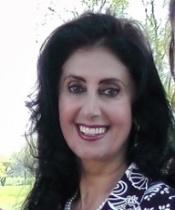The Necessity of Preserving Western Armenian
September 24, 2018“Language is the road map of a culture. It tells you where its people come from and where they are going”
As I read the list of endangered languages published by the United Nations Educational, Scientific and Cultural Organization (UNESCO), it perplexed me when Western Armenian was categorized as “definitely endangered.” According to UNESCO, “definitely endangered” means that ‘children no longer learn the language as mother tongue in the home.’ Currently there are only 200,000 people who speak Western Armenian. However, according to the most recent UN data, the number of Armenians in the diaspora is 6-7 million.
A nation’s identity, its culture, its values, and the preservation of its heritage is dependent on its language. Armenian is no different. It should not be “optional” to teach Armenian to our children, but rather intentional. It may be a struggle, but not impossible. According to the University of Washington’s Institute for Learning and Brain Sciences, ‘optimal learning’ is achieved when children start learning two languages between birth and 3 years of age through high quality interactions with live human beings’ (Authors Patricia H. Kulh, Ph.D. and Naja Ferjan Ramirez, Ph.D.). Simply put, the best way to teach our mother tongue is face to face.
In addition, there is an infinite number of learning tools such as DVD’s, CD’s, audio books and multimedia sources that can be used as supplements to help introduce our children as well as adults to our mother tongue. The fruits of our labor will not be seen or heard spontaneously, however. Instead, after many months and years, a committed and determined parent will see their child (or children) has achieved a level of fluency and proficiency that is sufficient for formal or informal conversations. The emphasis is on commitment and attitude. The attitude must be one of intentional daily teaching, even if it is for ten minutes a day. This, however, is not limited to parents of young children. Adults of any age, Armenian or non Armenian, can learn Western Armenian, given today’s technologically rich era of multimedia and social media.
One might wonder how long it takes to learn a new language or your native language.From my own research, thirty minutes per day for two years will provide a comfortable level of fluency. Again, be mindful that Western Armenian has been demoted to “definitely endangered.” This can be reversed if the diaspora has a unified, intentional goal of preserving the heart and soul of our language, and ultimately, our nation.
Many would argue they don’t have thirty minutes to spare each day. Yet the average daily use of social media is over two hours. Yes, it takes discipline and living with purpose, but at this low point in our history, we have no choice. In fact, it is our responsibility and privilege to our next generation. It’s up to you . It’s up to us. It is never too late, and it is never too early to learn and preserve Western Armenian.
Author information

Martha Mekaelian
Martha Mekaelian’s parents are from Jerusalem (mother), and Jordan (father), and she is a first generation Armenian (born in the US). She has a Professional Educator Licensure in the state of Illinois, with endorsements in the fields of Learning Behavior Specialist 1, Learning Disabilities, and Social/Emotional Disorders. As a Christian (first, and foremost), she has served at the St. Gregory of Datev Institute in Philadelphia, Pennsylvania for over 25 consecutive years. As a humanitarian, she has worked with AmeriCares and The Prelacy of the Eastern United States in securing billions of dollars of humanitarian aid for Armenia for nearly 25 years, and received the first humanitarian award from the Armenian Prelacy in 1998.
The post The Necessity of Preserving Western Armenian appeared first on The Armenian Weekly.
Source: Armenian Weekly
Link: The Necessity of Preserving Western Armenian